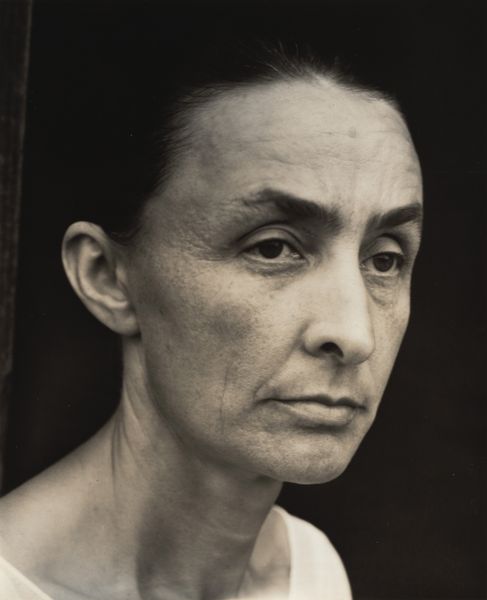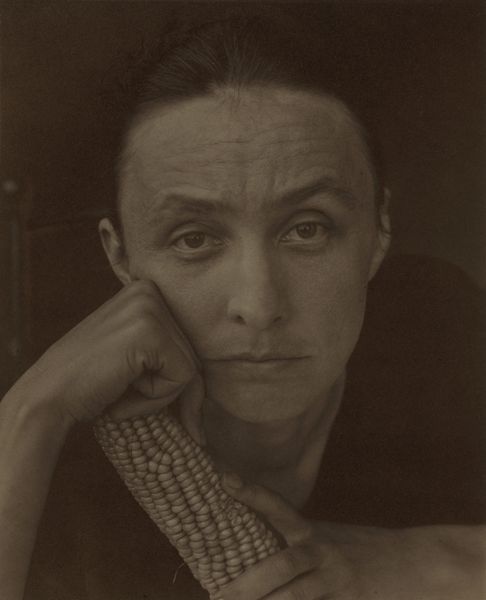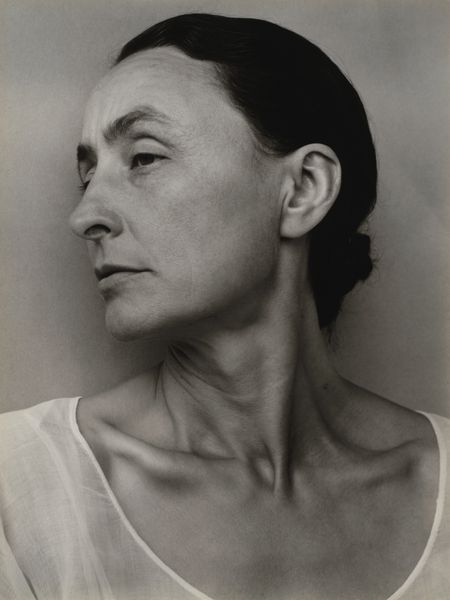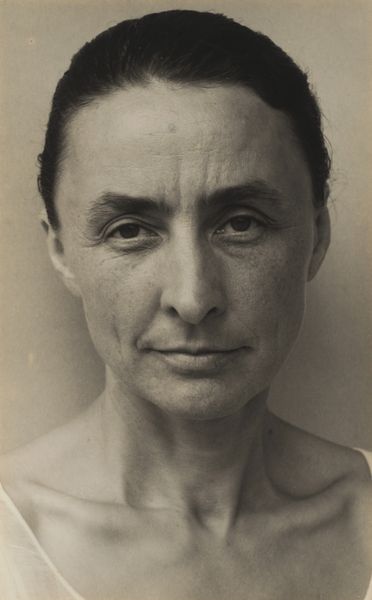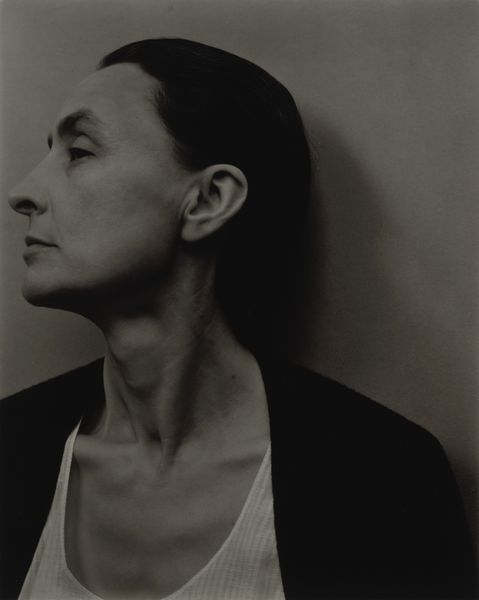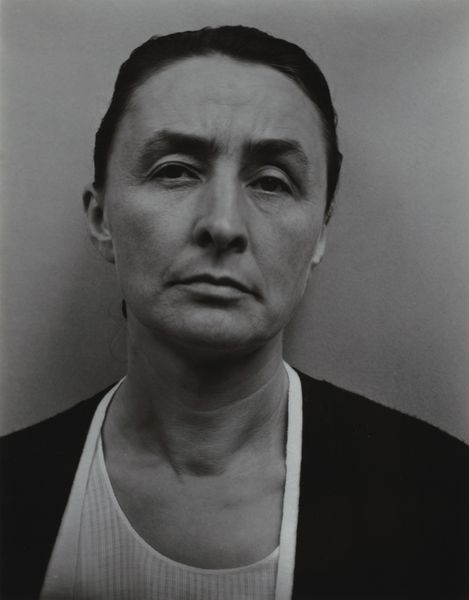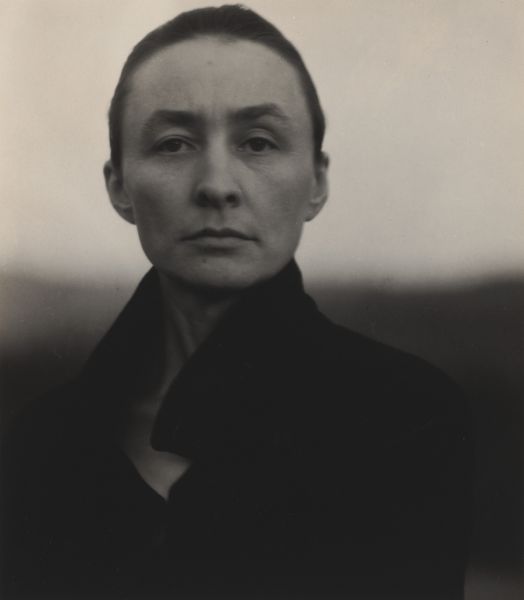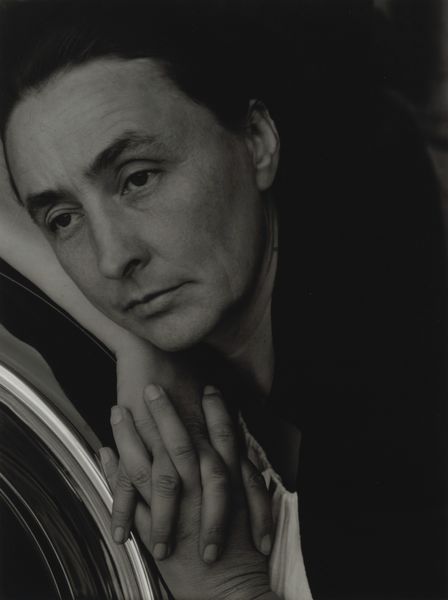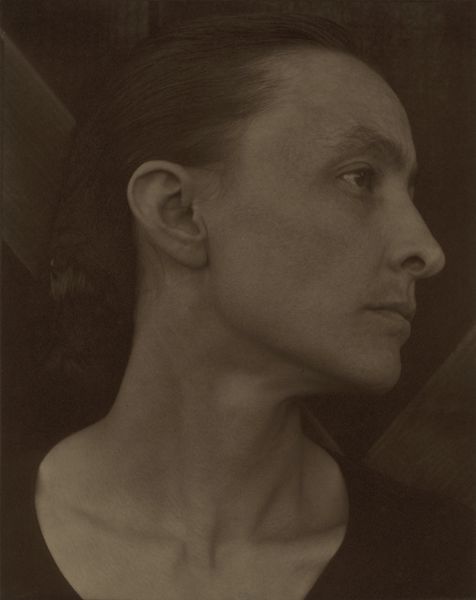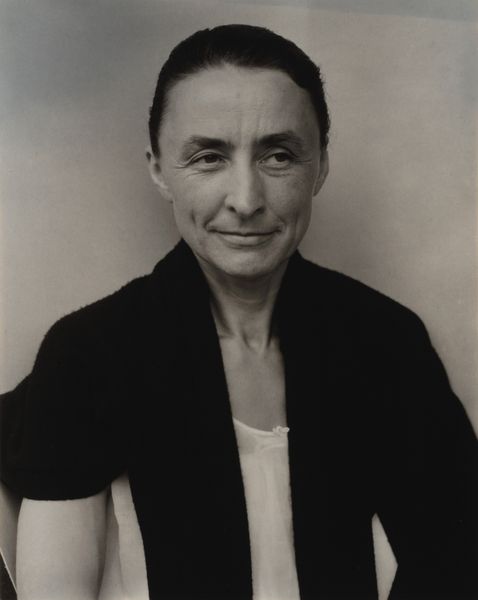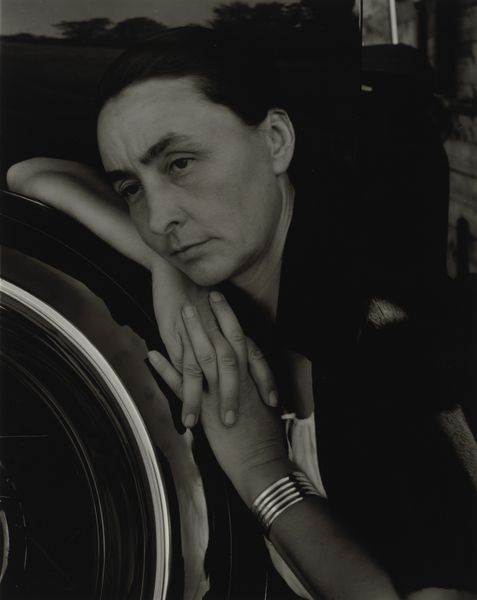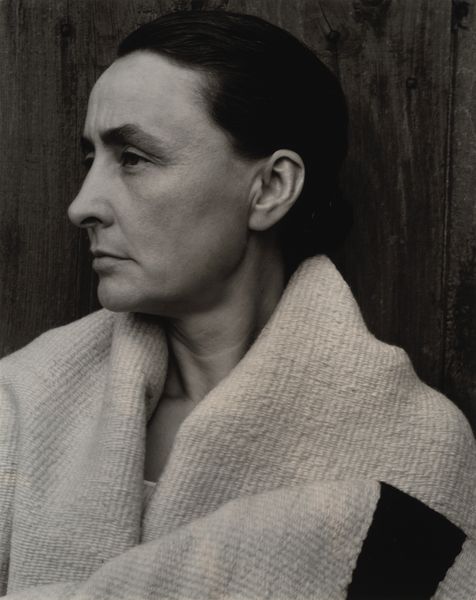
photography, gelatin-silver-print
#
portrait
#
portrait
#
photography
#
gelatin-silver-print
#
modernism
#
realism
Dimensions: sheet (trimmed to image): 22.6 x 18.1 cm (8 7/8 x 7 1/8 in.) mount: 52.9 x 38.7 cm (20 13/16 x 15 1/4 in.)
Copyright: National Gallery of Art: CC0 1.0
Curator: Welcome. Today we're considering Alfred Stieglitz's "Georgia O'Keeffe," a gelatin-silver print from 1932. Editor: There's a quiet strength to this portrait. The direct gaze, the stark contrast... it projects a feeling of intense self-possession. Curator: Stieglitz, of course, was deeply involved in the Photo-Secession movement, championing photography as fine art. The very deliberate choice of gelatin-silver allows for that rich tonal range, creating a surface with a beautiful, almost tangible quality. One can imagine him meticulously controlling the entire printing process. Editor: It’s O'Keeffe’s face that commands my attention, however. Those strong, unwavering eyes... there’s an undeniable weight of experience there. To me, it feels less like a depiction of O'Keeffe herself and more an embodiment of the modern woman: independent, determined, and challenging the societal norms of her time. Curator: I see what you mean. Looking at it from a material perspective, this wasn't simply a case of pointing and shooting. Consider the darkroom techniques required to produce this image, how they become performative acts themselves, influencing the outcome and lending it an inherent depth and power. Editor: Do you see O'Keeffe as a symbol in this photograph? Is it Stieglitz's image of his muse more than O'Keefe herself? It speaks volumes that such a groundbreaking modernist artist is captured so traditionally by her partner. It certainly clashes with what I associate with her oeuvre. Curator: Precisely! It raises questions about artistic control, collaboration, even commodification of an artist's persona. The act of printing these images and exhibiting them must be accounted for when discussing the meaning. This material object in front of us isn’t divorced from that system. Editor: Well, seeing O’Keeffe represented through such stark photographic portraiture, has certainly enriched my understanding of both artists! Thank you. Curator: And for me, thinking through its means of production deepens the visual experience.
Comments
No comments
Be the first to comment and join the conversation on the ultimate creative platform.
